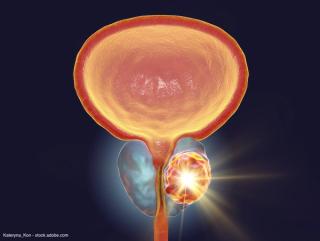
Prostate Cancer
Latest News
Latest Videos

CME Content
More News

The proposed clinical quality measure comes as a pair of JAMA studies note a decline in screening since the USPSTF recommended against screening.

Recent developments in PSA screening point out why policy truly does matter to residents, writes Alan L. Kaplan, MD, in this blog post.

In her first blog post for Urology Times, nurse practitioner Adele M. Caruso, MSN, CRNP, provides an update on the ongoing PSA screening debate and discusses helpful resources to use when questions on screening arise.

Oncologic outcomes are similar using focal cryotherapy and focal high-intensity focused ultrasound for treatment of localized prostate cancer, French urologists reported at the World Congress of Endourology and SWL in London.

Other pipeline products discussed in this article include agents for urinary catheter blockage, prostate cancer, bladder cancer, and overactive bladder.

Findings from a retrospective study lend support to the idea that even in men with a Gleason 7 (3+4) biopsy score, prostate cancer may sometimes act like low-risk disease.

The test could be a step closer to personalized risk-based prostate cancer diagnostic programs, study authors say.

Researchers say they’ve uncovered a wide variation in costs to treat low-risk prostate cancer.

“The best way to avoid overtreatment is to avoid overdiagnosis. MRI allows you to do that," says Mark Emberton, MD.

Other products highlighted in this slideshow include a trial system for incontinence therapy, a compact catheter, a wearable digital technology solution for continence care assessment and management, and laser fiber and sheath system.

A prostate cancer vaccine and an infertility diagnostic tool are among the other pipeline products discussed in this round-up.

Don't count out men who have not recovered urinary and erectile function at 12 months after radical prostatectomy.

The Sonablate 450, SonaCare Medical’s high-intensity focused ultrasound (HIFU) device, has received FDA clearance for prostate tissue ablation.

New study findings from the Ronald Reagan UCLA Medical Center, Los Angeles add evidence supporting the potential for targeted magnetic resonance-ultrasound (MR-US) fusion biopsy to improve the diagnosis of prostate cancer. Learn more

In this interview, Peter L. Choyke, MD, discusses current methods of detecting biochemical recurrence with imaging, promising new techniques to localize recurrence, and cost considerations.

Positron emission tomography with a 68Gallium-labeled ligand of prostate-specific membrane antigen (68Ga-HBED-PSMA-PET hybrid imaging) is a promising new diagnostic tool for staging prostate cancer, according to German urologists who presented their experience at the American Society of Clinical Oncology annual meeting in Chicago. Get results

Hear and get results from Neal Shore, MD, as he discusses with Crystal Murcia, PhD the surveys findings, explains why men aren’t speaking up about their prostate cancer symptoms, and urologists' role in assessing how patients are feeling.

The assay might help identify candidates for active surveillance, study authors say.

A new study underscores the long-term value of active surveillance for men with low- or very low-risk prostate cancer.

In this installment of "Product Preview," also look for information on products in the pipeline for renal cell carcinoma and interstitial cystitis.

After accounting for the risk of reclassification, carefully monitored men with favorable-risk prostate cancer who enroll in active surveillance and undergo delayed surgery are no more likely to demonstrate adverse features associated with 15-year prostate cancer-specific mortality than their counterparts who elect immediate curative treatment, say researchers from the Johns Hopkins University Brady Urological Institute, Baltimore.

After a median of 2 years in an active surveillance cohort being followed with multiparametric-magnetic resonance imaging and MRI-transrectal ultrasound fusion-guided biopsy (“targeted biopsy”), rates of biopsy-proven pathologic progression are similar among men with low-risk and intermediate-risk disease, say researchers from the National Institutes of Health.

Among men who are potent and have low-risk prostate cancer, focal cryotherapy appears to deliver similar oncologic control but with much better recovery of erectile function than a whole-gland approach, according to an analysis using data from the Cryo On-Line Data Registry.

The cost of radiation therapy for prostate cancer in the United States varies substantially, and most of the variation is accounted for by factors that are not related to the patient or tumor, according to the results of a study published online in Journal of Oncology Practice (Aug. 11, 2015).

A newly identified subset of prostate cancer biomarkers could help explain why African-American men are more likely than European-American men to develop and die from prostate cancer.





















